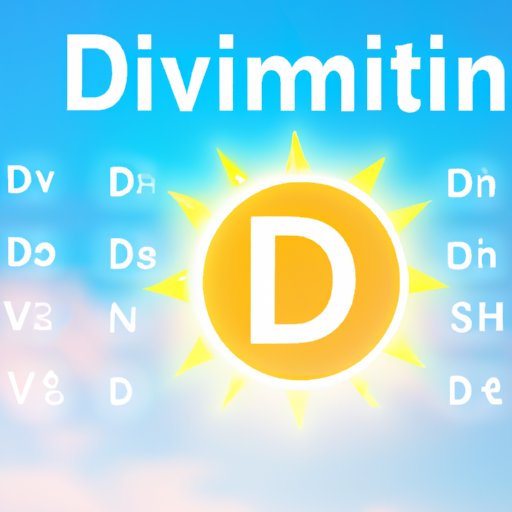
I. Introduction
Vitamin D is an essential nutrient that plays a vital role in maintaining our health. Regularly getting enough vitamin D helps us to strengthen our immune system, promote better bone health, and reduce the risk of chronic diseases. One of the most natural ways to obtain vitamin D is through sun exposure. However, many people struggle with how much sun exposure is necessary to achieve the recommended daily amount.
II. The benefits of getting vitamin D from the sun: How to safely soak up some rays
The sun provides a cost-effective and natural source of vitamin D. Studies have shown that exposing your skin to sunlight can improve your bone health, reduce depression, and even help your skin look better. It is essential to obtain vitamin D through sunlight exposure safely. Time of day, duration, and the frequency of exposure are all crucial factors to take into account when getting enough vitamin D. Depending on the skin type, fair or sensitive skin may require shorter exposure times than individuals with more naturally pigmented skin.
III. How much sun do you really need for vitamin D? Understanding the science
When our skin is exposed to the sun’s ultraviolet B (UVB) rays, it triggers the synthesis of vitamin D. However, the amount of time needed to produce a healthy amount of vitamin D is not one-size-fits-all, since the amount needed depends on factors such as location, time of year, and skin pigmentation. For instance, people living closer to the equator require less sun exposure to absorb the same amount of vitamin D as those living outside of the equator.
IV. Think twice before skipping the sunscreen: The connection between UV rays and vitamin D absorption
A prevalent myth is that using sunscreen can hinder vitamin D absorption. It is essential to protect yourself from UV rays with sunscreen to ensure that your skin remains safe. Sunscreen does not absorb all the UVB rays needed to produce the essential amount of vitamin D, so it is still essential to spend some time in the sun and uncover protected areas of skin.
V. The risks of overexposure: Finding the balance between vitamin D and skin health
Overexposure to the sun can result in sun damage, which includes premature aging and even skin cancer. It is crucial to find the right balance between vitamin D and skin health. It is always better to err on the side of caution when it comes to spending time in the sun. Wearing protective clothing, avoiding prolonged periods in the sun, and applying sunscreen with a decent sun protection factor (SPF) are all measures that people can use to protect themselves from too much UV exposure.
VI. Best times to catch some vitamin D: Sun safety tips during peak hours
During the most significant hours of sunlight, it is essential to take extra precautions while spending time outside. UV exposure from the sun reaches its peak between 10 a.m. – 4 p.m. During these periods seeking shade, wearing protective clothing, and applying pregnancy-safe sunscreens all go a long way to protect you.
VII. Alternatives to sun exposure: Getting enough vitamin D through food and supplements
For people that have limited access to sunlight due to the constraints of their occupation, it’s important to note that alternatives exist. Vitamin D supplements and food sources, such as eggs, fatty fish, and dairy products, can help to supplement a lack of sun exposure. Furthermore, many food items are fortified with vitamin D, such as cereal and milk, can help you maintain healthy levels of vitamin D in your body.
VIII. Conclusion
In conclusion, although there is no one-size solution to obtaining vitamin D levels, the sun is an effective and natural way to do so. However, it must be obtained safely to avoid skin damage related to overexposure to UV rays. It is possible to obtain vitamin D through a range of safe methods, including food and supplements. Nonetheless, finding the right balance between getting enough Vitamin D and protecting your skin from UV damage is critical to ensure overall good health.





